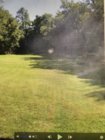linebaugh
Silver $$ Contributor
Just an FYI on the 95SMKs but please read everything before making generic assumptions.
I was shooting a 22BR +.050 for about 1.5 seasons in PRS matches. I am running a 30" tube and admittently I have been running excessive pressure and pushing the 95 SMK to 3030 fps in a 7 twist barrel. That equates to about 311,600 rpms. That RPM is probably not full value stable BUT I have regularly made hits to 1400 yards during matches and practice so its not exactly unstable.
My barrel was looking good up until about 1600 rounds and then it really started to fire crack the throat area badly. I shot a match in MO in the heat and humidity and ended up losing a good number of bullets. At the time the barrel would have had 1800-1900 rounds on it. I shot a match yesterday with the last of my reloads and I probably had about a 15% fail rate on bullets at the 2000-2100 round count. Again keep in mind I was running excessive pressure the whole time I shot this barrel.
I am chambering up another 7tw in 22-6GT today throated to the 95s and will see if lowering the pressure helps extend barrel life. I will report back in a year when I am back in that 2000 round count range or if I experience failures prior to. It may be worth noting that none of my fast twist 22 calibers have ever exceeded 2000 rounds of usable barrel life. This last one got close and I am hoping to get over that edge this time.
I was shooting a 22BR +.050 for about 1.5 seasons in PRS matches. I am running a 30" tube and admittently I have been running excessive pressure and pushing the 95 SMK to 3030 fps in a 7 twist barrel. That equates to about 311,600 rpms. That RPM is probably not full value stable BUT I have regularly made hits to 1400 yards during matches and practice so its not exactly unstable.
My barrel was looking good up until about 1600 rounds and then it really started to fire crack the throat area badly. I shot a match in MO in the heat and humidity and ended up losing a good number of bullets. At the time the barrel would have had 1800-1900 rounds on it. I shot a match yesterday with the last of my reloads and I probably had about a 15% fail rate on bullets at the 2000-2100 round count. Again keep in mind I was running excessive pressure the whole time I shot this barrel.
I am chambering up another 7tw in 22-6GT today throated to the 95s and will see if lowering the pressure helps extend barrel life. I will report back in a year when I am back in that 2000 round count range or if I experience failures prior to. It may be worth noting that none of my fast twist 22 calibers have ever exceeded 2000 rounds of usable barrel life. This last one got close and I am hoping to get over that edge this time.












